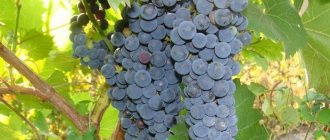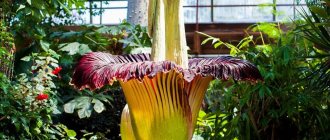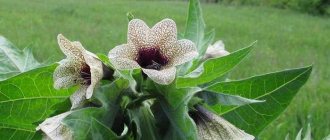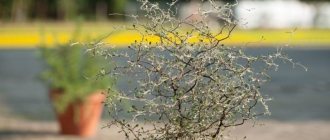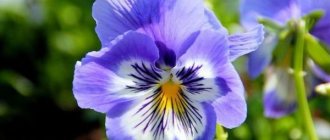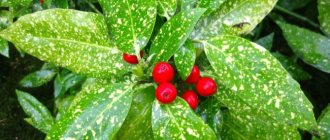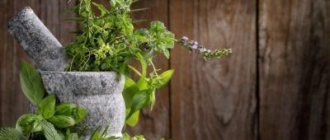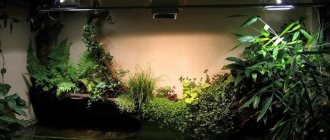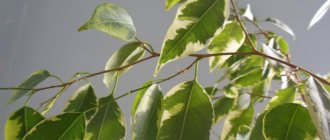Author: Millefeuille
August 13, 2022 08:48
Community: Facts
Tags: stuff interesting nightshade plants facts flora
15375
27
You can’t even imagine how many interesting, fantastic, beautiful and unexpected things one nightshade family can contain. The mere fact that they all contain poison is already interesting in itself. Let's tell you about some representatives in more detail, maybe you didn't know this.
True, some representatives are very poisonous
0
Source:
A fairly tenacious plant of the nightshade family, distributed in southern Europe, Africa, as well as in the Baltic states and the European part of Russia, in the Crimea and the Caucasus. It grows along the edges of fields, in vegetable gardens and wastelands. The plant is poisonous in its entirety, the seeds are especially dangerous - 150 very small, black seeds - certain death. Although the plant itself is unusually beautiful, very unpretentious, in small doses it is medicinal and therefore is cultivated for garden plantings (Datura metel), by breeding more and more new varieties, different in color and size of flowers.
0
Source:
0
Source:
0
Source:
Features of nightshade plants
This family is represented by perennial and annual plants.
Characteristic features of their structure:
- The leaves are lobed, entire or dissected. The surface of the leaves may be covered with small hairs. Stipules are not detected.
- The structure of the stem is straight. It is juicy, brittle and covered with fine hairiness. The underground shoot can form into tubers (eg potatoes).
- Inflorescences can be simple or complex. Simple ones are represented by a single flower. Complex ones are presented in the form of a panicle, brush or convolution.
- The flowers of this family are bisexual, the perianth is double. Five fused sepals form a calyx. The corolla also consists of 5 petals fused together. There are 5 stamens tightly attached to the pistil.
- The fruits can be presented in the form of berries (physalis, potatoes, eggplant) or in the form of a box (tobacco, petunia or dope). Unripe fruits most often contain poison. Although some of them are used to make medicines.
- The roots have a taplike appearance, but in cases with vegetative propagation, a fibrous root system is formed.
Individual intolerance and its consequences
In some cases, including nightshade vegetables in the diet can lead to a deterioration in overall health. It is caused by individual intolerance to products obtained from this group of agricultural plants.
Manifestations include the following:
- skin rashes and redness, itching;
- a sore throat;
- the appearance of edema;
- suffocation.
If you experience these symptoms after eating a certain food, eliminate it from your diet.
Saraha
This herbaceous shrub, almost unknown in Russia, grows up to 35 cm in height and blooms with yellow-green flowers. It is spreading but not tall. Large black berries quickly fall off if they are not picked on time.
Saraha fruits are very healthy and contain many trace elements and vitamins. They taste like blueberries with a hint of nutty flavor.
Culture loves light and warmth. It cannot be planted in the place where tomatoes and potatoes grew, since nightshades have common diseases. In general, the plant is quite unpretentious, and the care technique is identical to tomatoes.
Medicinal properties of black nightshade
Benefits and possible harm from using the plant.
It is correct to use fully ripened nightshade fruits. They are extremely rich in sugars, vitamin C, rutin, manganese, calcium, glycosides, organic acids, and carotene.
Unripe berries contain poisonous solanine (alkaloid). The herbaceous part of the plant is rich in ascorbic acid, tannins and carotene. It also includes alkaloids.
The whole plant is considered medicinal - the stem with leaves, fruits and roots. When properly collected, prepared and dosed, the plant acts as:
- Expectorant.
- Painkiller.
- Anti-inflammatory.
- Diuretic.
- Healing.
- Lowering blood pressure.
- Sedative.
It will harm the body only if you pick green or still brown (unripe) berries, and when preparing a decoction or tincture, neglect the indicated dosage.
Naranjilla
A very unusual plant that is rarely found even among exotic lovers. But it’s worth trying to grow it if you like sweet and sour vegetables.
The naranjilla fruit looks like a fuzzy tomato, but its taste is more like a citrus fruit and combines shades of lime, strawberry, pineapple, rhubarb and tomato. It is very refreshing and invigorating. The pulp can be diluted with water and you get a delicious fragrant drink.
You can grow the southern guest in open ground and in a greenhouse. Of course, the last option is preferable. Under cover, naranjilla grows as powerful as a tree, up to 2.5 m tall. “Little Orange,” as its name is translated, loves moisture and warmth. It does not tolerate cold and stops growing at temperatures below 10 degrees.
Contraindications
Due to the fact that nightshade contains toxic substances, its use in any form is prohibited for pregnant women, nursing mothers and children. Because of this, it is not recommended to use it for diseases of the liver and pancreas.
Also, its antihypertensive properties do not allow use with low blood pressure.
Nightshade and the poisonous solanine in it can cause significant harm if used in large quantities, violating the dosage indicated in folk recipes, since even when subjected to heat treatment, it is not completely destroyed.
It must be remembered that unripe berries and young shoots with leaves are very poisonous. Ripe fruits are not dangerous, but they should only be used in doses!
List of nightshade crops
The nightshade family is represented in the form of plants, vines, shrubs and trees. This list contains many medicinal and poisonous plants, as well as ornamental crops. Many of them are vegetable crops, without which it is impossible to imagine human life - these are potatoes, peppers, tomatoes, tobacco and others. The list of nightshades is so diverse that some species are even unknown to humans.
Herbaceous plants
Herbaceous representatives of the nightshade family grow, as a rule, in temperate climate zones and are represented by annual and perennial plants.
A large list of herbaceous plants includes:
- vegetable crops (potatoes, eggplants, hot and sweet peppers, tomatoes, as well as melon pear and fesalis);
- medicinal herbs (belladonna, bittersweet nightshade, datura, black henbane, mandrake, carniolian scopolia);
- indoor plants (hybrid petunia, brugmansia, false pepper nightshade, ampelous calibrachoa, jasmine nightshade).
Vegetable plants
The cultivation of vegetable nightshades began in Europe in the 16th century. The varieties that we eat have undergone a long selection process.
Potatoes play an important place in the nightshade family. Today this product is key in human nutrition. It may contain up to 25% starch (depending on the type of vegetable), many complex carbohydrates, vitamin C and fiber.
Potato
Eggplants were first discovered and grown in India. After which they were transported to European countries. The vegetable is valued to this day due to the presence of a large number of mineral compounds, vitamins and pectin.
In the photo: beds with eggplants
Today you can have tomatoes on the dinner table all year round, since the vegetable is grown in greenhouses. This vegetable is characterized by high nutritional value. It contains elements useful for anemia, heart disease and vascular problems. Gastroenterologists and nutritionists advise eating raw tomatoes every day (the optimal portion of tomatoes for an adult is 100 g per day).
Tomato
Sweet and bitter peppers belong to the nightshade family. These fruits are characterized by a high content of vitamin C and mineral compounds. Eating pepper can lower blood cholesterol levels and strengthen blood vessels.
Sweet pepper
Physalis, also belonging to the nightshade family, is not in high demand in Russia, but is popular in many countries around the world. For example, in Mexico they love him very much, because... it is similar in taste and properties to our tomatoes. In South America, varieties of physalis even include a berry-flavored strawberry variety. Peruvian berries have a sweet-sour taste, which allows them to be pickled and made into jam.
Physalis
Melon pear is another interesting representative of the nightshade family, which has increasingly begun to appear among summer residents. The fruit attracts attention with its pleasant sweet taste and the presence of a large amount of vitamins, keratin and iron. Melon pear has an excellent taste when salted. In addition, it makes excellent jam.
Melon pear
Ornamental nightshade plants
A special place should be given to ornamental nightshade plants, which are highly valued by amateur gardeners. This category includes shrubs and vines with climbing stems. They are characterized by beautiful flowering and fruits of unusual color and shape.
This is what the list of ornamental nightshade plants found in Russia looks like:
- Ampelous calibrachoa. This culture is one of the best options for decorating terraces. During flowering, it produces buds that look like bells. The white variety gives a persistent and very pleasant aroma. The plant is characterized by a rather long flowering period. This crop is loved because its buds open in the evening and during rain.
- Petunia. It gained popularity due to its lush, long flowering and beautiful two-color flowers with flowing shoots. The flowering period of the plant lasts until frost, so they are an ideal option for vertical gardening.
- Nightshade is bittersweet. They decorate ponds.
- False pepper nightshade. It is usually grown in pots and attracts attention with its round scarlet fruits, which form from the beginning of the summer season until the fall.
- Jasmine nightshade. Attracts attention with clusters of white inflorescences, pleasing to the eye from spring until the onset of frost.
Ampel calibrachoa
Petunia
Nightshade bittersweet
False pepper nightshade
Jasmine nightshade
Wild plants
Such plants can be found on the outskirts of vacant lots, near residential buildings, in vegetable gardens and garbage dumps. The most common is black nightshade, an annual herb half a meter high. The unripe fruits of nightshade, like many of its representatives, are poisonous. Although they can be safely consumed when ripe.
Along country roads there are wild datura and black henbane, the consumption of which can be fatal.
Black henbane
Medicinal plants of the nightshade family
Belladonna is in greatest demand in medicine. The foliage of this plant is used by humans in the form of tinctures and tablets for gastrointestinal diseases, bronchitis, gynecological and heart diseases. Belladonna is also taken to remove toxins from mushroom poisoning. In small doses, the plant can reduce the secretion of the salivary and sweat glands. The effectiveness of belladonna is also evident in the treatment of Parkinson's disease due to the scopolamine contained in the culture.
Henbane is widely popular in folk recipes as a painkiller. But it is also effective in the treatment of pulmonary diseases, asthma, neuroses, and insomnia. Henbane also helps with headaches. A tincture of this plant can relieve stomach spasms and pain caused by gout. Drinking a decoction of the leaves relieves inflammation and pain due to rheumatism. An ointment prepared from henbane leaves is prescribed for bone tuberculosis.
Since ancient times, the medicinal mandrake has gained popularity as a herb that drives away diseases. The leaves of this plant are applied to wounds and considered as a pain reliever. Extracts and tinctures are prepared from them to eliminate skin pathologies and gastrointestinal diseases.
Hot pepper, in addition to its excellent taste, has a number of medicinal properties. Thus, vodka tincture of bitter pepper is used for radiculitis, intestinal infections, and colds. In cosmetics, hot pepper acts as an element that stimulates blood circulation and hair growth.
Black nightshade is taken for fevers, it is used to treat liver and skin problems (lichen, psoriasis). Pepper nightshade is effective in treating sore throat. Eating papillary nightshade can help you overcome a wet cough.
Poisonous nightshade plants
Many nightshade plants fall into the category of poisonous, so official medicine prescribes them in very small dosages. However, eating some nightshade berries can lead to death. The list of the most dangerous crops includes:
- Belladonna. The medicinal plant is a herbaceous shrub that grows up to 1.5 meters. Belladonna is found on the outskirts of the forest, near reservoirs and in open forests. A woody trunk, succulent foliage, a strong root system, flowers with bells of a dark purple hue, oblong leaves with sharp ends - all these are signs of a poisonous plant. The fruits of belladonna are black, round and sweet. Poison is found in all parts of the culture. It will be enough for an animal to eat 3-5 berries to die. 10 eaten fruits can kill a person.
- Wolfberry. It is a perennial subshrub, growing up to 2 meters, with a spiral-shaped stem and oval leaves. The poisonous berry has a bright red color and a sweetish, bitter taste. The plant is widely found in traditional medicine recipes. Gardeners use it to prepare infusions that destroy pests.
- Henbane. The height of this two-year-old plant does not exceed 110 cm. The stem of henbane is straight, hard with small hairs. The leaves of the plant are covered with delicate fluff. The inflorescences have a pale yellow tint. The fruit has the shape of a box-jug, in which about 500 seeds ripen. All parts of henbane are poisonous, sticky and emit an unpleasant odor. In official medicine, seeds, stems and leaves are used. Consumption of the plant can provoke a hallucinogenic effect.
- Mandrake. This perennial plant grows without a stem in the form of a rosette with a diameter of up to 1.5 meters. The leaves of the mandrake are large, the roots resemble a human figure. Small, single flowers can be white-green, purple or blue. In ancient times, various potions were prepared from this plant to ward off evil spirits. Consumption of the plant can cause hallucinations and psychotropic effects.
- Annual tobacco. The plant grows up to 3 meters, has a straight trunk with rough leaves. Its pink-white flowers look like a narrow funnel with a diameter of 5 cm. The leaves of this plant contain a large amount of nicotinic acid, which is harmful to humans.
Belladonna
Wolfberry
Black henbane
Mandrake
Annual tobacco
Use in medicine
The herb and fruits of nightshade are still not used in traditional medicine, but they have found serious application in folk medicine.
- It is successfully used to relieve headaches and treat neuroses.
- For hypertension and atherosclerosis.
- Relieves inflammation during exacerbation of rheumatic pain.
- Helps with epilepsy and manifestations of hysteria.
- Relieves asthma attacks and treats colds.
- Soothes the mucous membrane, irritated due to gastritis and other gastrointestinal diseases.
- It has a soothing and disinfecting effect in case of inflammation of the bladder.
- Relieves discomfort during painful heavy menstruation.
- Promotes healing of purulent wounds and boils.
- Reduces symptoms of otitis media and sinusitis.
- Effectively fights parasites.
Several recipes using fruits and leaves
1. A decoction of green parts will help with cystitis, headaches, high blood pressure, and asthma.
To do this, take one small spoon of finely chopped herbs and pour a cup of boiling water. It is better to use enamel cookware. After cooking over low heat for 10-15 minutes, the broth is cooled, then filtered and topped up with boiled water to the original volume.
Also, with high blood pressure, you can eat up to 10 black nightshade berries per day. The pain will go away if you make a headband from crushed leaves.
2. Tincture of leaves for indigestion.
A large spoonful of crushed leaves is poured with boiling water (300 ml) and left for a couple of hours. The strained liquid is taken half an hour before meals. One sip is enough.
3.Rheumatic pain will subside if:
Place the flowers of the plant (1 small spoon) in a cup of boiling water and steep like regular tea. Take several times a day. This will have a diuretic effect and calm the body.
4.Rinse for sore throat and other throat diseases.
Squeeze juice from nightshade berries (about 25-30 ml) and dilute it in boiled water - no more than half a glass. Gargle several times a day.
The preparation of this recipe is different from others. No heat treatment required. It is enough to take 30-40 grams of chopped leaves and fill them with warm water (1.5-2 liters). After a couple of hours, the resulting infusion can be used to treat wounds. This infusion is also suitable for sanitizing the oral cavity.
Dry soaked or fresh leaves can be applied to hemorrhoids - this will greatly relieve pain and reduce inflammation.
Chinese healers use the ash of grass roots with sesame oil - the resulting mixture is used to lubricate inflamed nodes.
Tamarillo
This amazing plant has a second name - tomato tree. Its fruits resemble both tomatoes and passion fruit. When eaten, the red peel is peeled off. The pulp is juicy, sweet and sour, you can make jam from it, put it in ice cream or salad, or eat it fresh. Varieties of tamarillo with yellow and orange peel have been developed. They are the most aromatic and sweet.
The tree does not tolerate extreme heat or excessive watering, so for successful growth and fruiting it is important to strictly follow agrotechnical rules.
You can grow many useful and unusual plants with tasty fruits in your own garden. If you are bored with ordinary cucumbers and tomatoes, then try placing an exotic guest in the garden.
- Author: Zimina Tatyana
Rate this article:
- 5
- 4
- 3
- 2
- 1
(11 votes, average: 4.3 out of 5)
Share with your friends!
Danger of poisoning
Having agreed to carry out treatment at home with the help of this plant, you must strictly adhere to the exact dosage. You cannot brew nightshade fruits or leaves by eyeballing them. In this case, poisonous black nightshade will cause harm instead of benefit and create a lot of health problems.
Symptoms of poisoning
You should take it seriously if, after taking the decoction, a person begins to experience:
- Nausea
- Headache
- Cravings in the stomach
- Labored breathing
- Heartbeat
- Increased body temperature
- Diarrhea
In the same case, if vomiting, diarrhea occurs, or consciousness begins to cloud, you should immediately call an ambulance.
Treatment of poisoning
With the listed symptoms, there is no need to waste time while waiting for medical help. Some procedures can significantly alleviate the condition, which will have a positive effect on treatment in the future.
- Try to artificially induce vomiting. To do this, you need to dilute potassium permanganate in water, but do not overdo it with its amount. Just a few crystals will create the desired consistency. They should be thoroughly dissolved in water, or it is better to strain the prepared solution through several layers of gauze, since an unmelted crystal, once on the mucous membrane, will simply burn it.
- If the victim loses consciousness, lay him down and turn his head so that the tongue does not interfere with breathing. Provide unobstructed air access and sprinkle water on the patient’s face, you can sniff ammonia, this will restore consciousness.
The use of the plant, black nightshade, for medicinal purposes has been known for centuries. The main thing is to prepare it correctly. Never pick unripe green berries, due to their high content of poisonous saponin and alkaloids.
Ripe fruits can be used not only as a remedy, but also to make jam, jam or compote from them. Some housewives are happy to prepare for the winter by mixing fresh berries with sugar or honey.
During the cold season, such a product will be one of the few sources of vitamin C, which will strengthen the immune system.
